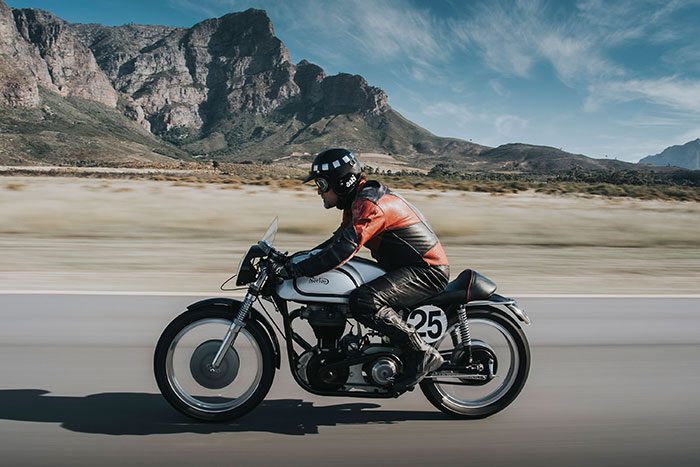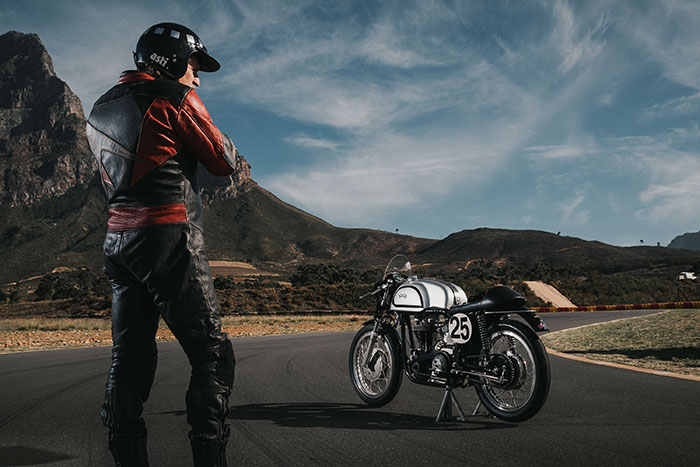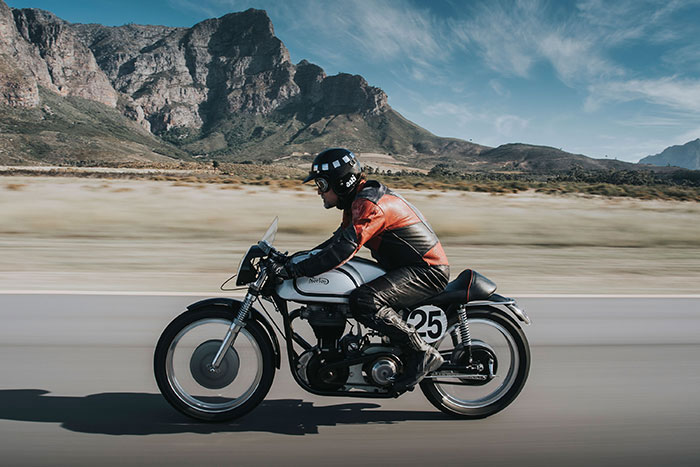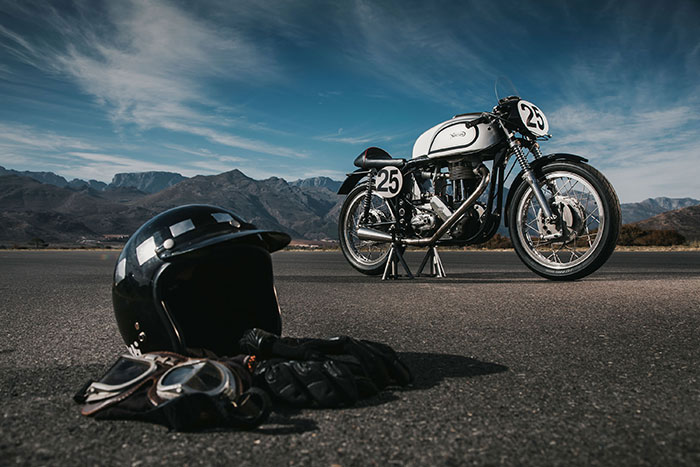
24 Jul Manx Norton 500
FMM curator Wayne Harley is a self-confessed motorcycle enthusiast and this month we continue our new series of features on some of the museum’s classic two-wheeled machines with a famous racer…

Every now and again a motorcycle comes along that changes everything, and the Manx Norton 500 is just such a machine. Briefly seen on the race circuits in 1939 and 1940, it would not emerge again until after the war. It reappeared in 1946 still basically the same machine as before but with new telescopic front forks. Development was steady if not a little slow, and in 1948 the bike got twin leading front brakes to deal with a top speed of 112 mph (180 km/h), but by the following year 120 mph (192 km/h) was easily attained.
Then, in 1950 Norton switched to a new frame, nick-named the ‘featherbed frame’ by professional motorcycle GP racer Harold Daniell after he said it was as comfortable as a featherbed. This frame would set Norton apart from its rivals for many years and in the hands of Geoff Duke it became a regular winner taking the GP title in 1950 and 1951. Norton also dominated the 500 cm3 and 350 cm3 classes at the famed Isle Of Man TT races. A 350 won the 1952 350 GP championship. However, by 1954 it was becoming clear that the old single was reaching the end of the line. With their short-stroke, high-revving, multi-cylinder engines and top speeds close to 150 mph (240 km/h), the Italian bikes had the edge.
At the end of 1954, Norton official withdrew from GP racing but continued to give support to many teams. In 1956, South African racing legend Paddy Driver rode a Manx Norton 500 as a privateer and finished a remarkable 6th at the Isle of Man TT. The Manx still scored a few successes in GP racing as late as 1957, but the most amazing result occurred in 1961 with a double hat-trick at the TT.
As one of the most successful British GP machines, it is easy to see why it is still raced today in many classic racing events around the world, with many ‘tributes’ or recreations being produced including the one at FMM. It was built up by Michael James Treventhen from Natal for classic racing. He used a 1954 featherbed frame and a Norton ES2 490 cm3 engine, which is not quite up to the Manx spec and power, but the bike feels great and at only 80 mph (128 km/h) it feels as quick as 120 mph (192 km/h) and sounds wonderful. Michael went to great effort to copy or use the correct bits and this 1954 Manx replica looks every bit the real thing. The ride is a little different to what I’m used to; for one, you sit way back on the bike and I found myself always trying to sit in my more conventional riding position, which is all wrong on this machine. Then, with the gear change on the right-hand side and the foot brake on the left, it means you must concentrate coming into corners as these two controls are the other way around when compared with contemporary bikes of today. If you are not paying attention, you could lock up the rear end.
As for the rest, it has lots of power and quick acceleration the likes of which you would expect of any 500 today. Once you get used the bike and all its little differences and trust the machine’s capabilities, you find yourself getting carried away a little. So, even if you consider that this is only a tribute machine, it is still clear why Norton was the dominate force back in the 1950s and just how good the real thing must have been.


Images by Peet Mocke



